8 Practical Ways To Deal With Pee Problems On The Run
Plumbing problems: You can hit the porta-potty eight times before a run to prevent them, plot your running route carefully to relieve them, or wear dark bottoms and bring a change of clothes to disguise them. Still, issues like leakage or an overactive bladder can make your run uncomfortable and embarrassing. Whether you always gotta go or often let a drip slip, there are more flow-related fixes than you may think.
Refuse to accept it.
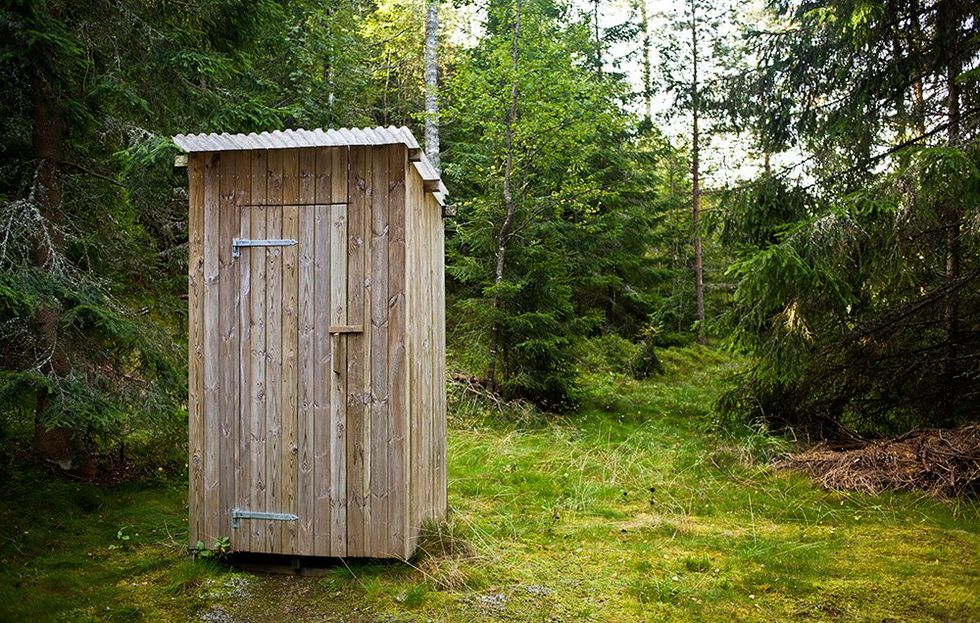
Potty jokes stream from runners’ mouths for good reason. According to a study in the Journal of Human Kinetics, more than 40% of elite female runners report leaking during running or other high-impact activities. Doctors call this stress incontinence. Countless other athletes of every pace and gender experience frequent mid-run urges to urinate, says Susie Gronski, DPT, a certified pelvic rehabilitation practitioner in Asheville, North Carolina.
But “common” and “normal” don’t mean the same thing, Gronski points out. “You don’t have to run wetting yourself,” she says, nor do you have to accept the need to stop every few miles. Most people should be able to last two to three hours between pee breaks—if you can’t, there’s help.
Figure out if you're weak—or too tense.
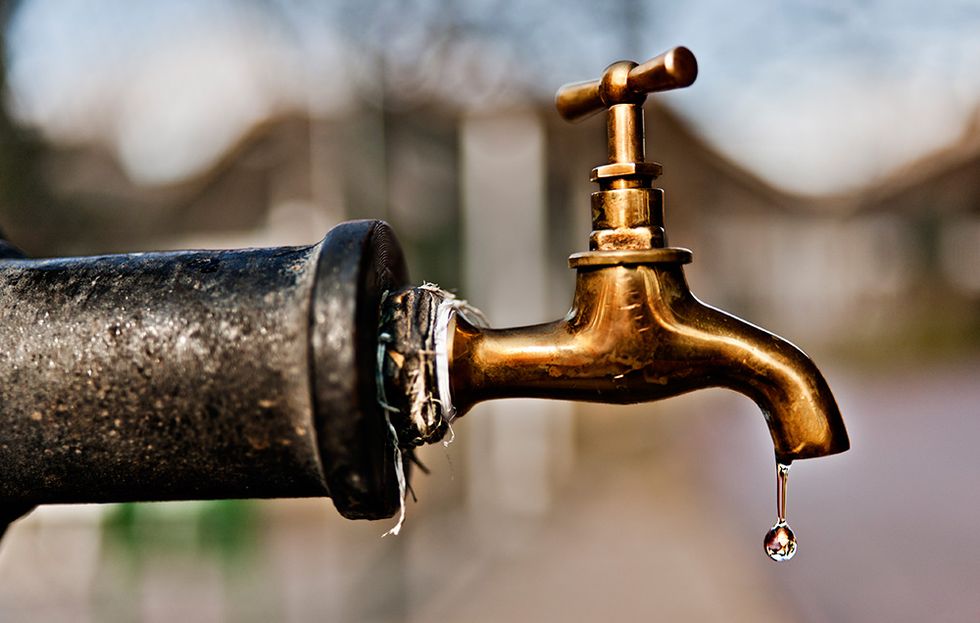
Women with stress incontinence are often told to do Kegels, exercises that strengthen the muscles of the pelvic floor. Trouble is, those work only if your problem stems from weakness, says Lauren Garges, PT, a board certified women’s health physical therapist in Bethlehem, Pennsylvania. That isn’t always the case.
First, a little anatomy. Your pelvic floor muscles stretch from your pubic bone in the front to your tailbone in the back and side to side between your hip bones—kind of like an internal trampoline. The stretchy shelf they form suspends organs like the bladder and uterus above the orifices below, Garges says.
For women, the strain of pregnancy and childbirth, hormonal shifts, and the force of gravity over time can weaken and stretch pelvic muscles and ligaments. The entire structure sags, squeezing the bladder and creating traction that pulls the urethra downward. Extra pressure from running—or coughing, laughing, or sneezing—can let loose anything from a dribble to a near deluge.
Chicago runner Tanya Kopke felt the full force of the matter at a neighborhood 5K, which she ran about six months after her daughter was born in 2009. “It was a terrible race because urine was just pouring out,” she says. As a nurse, Kopke, now 49, doesn’t normally flinch in the face of bodily functions. But that day, she wrapped her shirt around her waist and made a beeline for home.
While some women have a strength deficit, others possess plenty of pelvic power but lack the control or ability to release it, Garges says. Tension from injury or stress keeps their pelvic floor in a constant clench. Eventually, the muscles fatigue and give way, causing the same lack of support and leakage. If you have pain during intercourse or trouble inserting a tampon, that’s one indicator of tension rather than weakness, Gronski says.
Or, try this (up close and personal) self-test: Put two fingers in your vaginal opening and squeeze the muscles you use to hold in gas. You’ll feel a sensation like a circle closing, then an inward lift up. Relax, and you should experience a release. If nothing changes when you stop squeezing, your pelvic floor is probably overactive, Garges says.
If that’s the case, skip the Kegels and try deep breathing or other relaxation techniques instead. A therapist can help with biofeedback, which uses electronic monitors to help you learn to feel, control, and release your pelvic muscles.
Men’s anatomy provides them with extra safeguards against stress incontinence—two rings of muscle squeeze off their bladder and urethra, and then there’s the longer tube. They’re less likely to leak unless they’ve had surgery on their prostate, Gronski says. Still, pelvic floor tension can cause discomfort and pain in the penis and groin, along with feeling a need to pee. Pressure from cycling or hours of sitting sedentary at a desk can worsen the problem. The same types of relaxation strategies that help women with incontinence can also ease men’s urinary urges, Gronski says.
Don't drink too much…or too little.
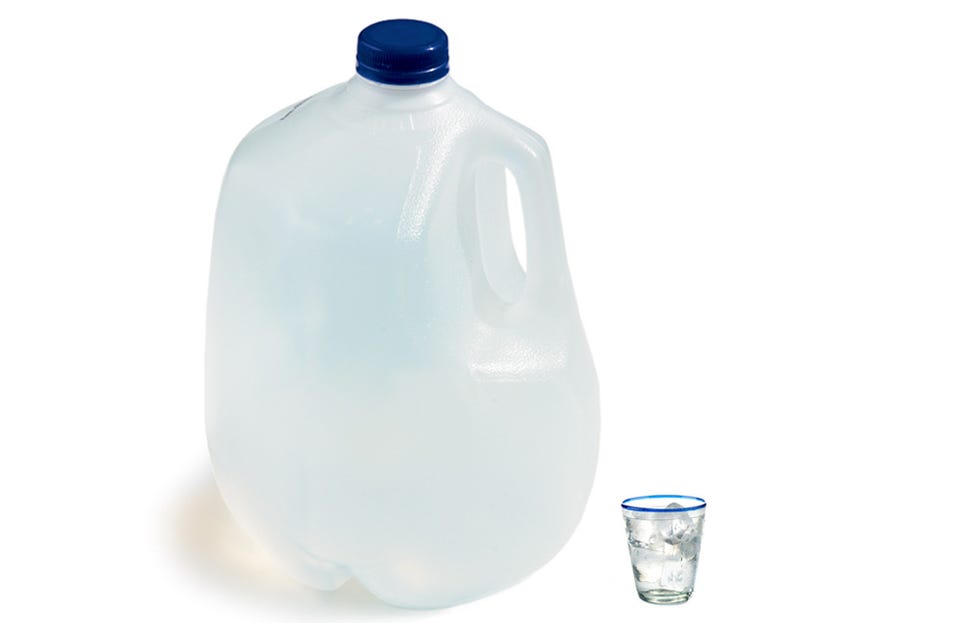
Most runners with plumbing problems instinctively try consuming less water. Take Elizabeth Clor, 38, who soaked her shorts with urine during her first 10K in 2005. Now, she puts down the water bottle a full two hours before a race.
While drinking too much worsens the problem, over-restriction can backfire, Gronski says. Dehydration concentrates your urine, irritating the sensitive lining of your bladder. Sugary sports chews and gels worsen the problem. Your bladder feels a strong urge to purge this non-diluted waste product, triggering mini-contractions to make you pee, she says.
Trial and error can help you get hydration just right. Start by dividing your body weight in half and adding 10 to 15%—that’s a your baseline target of ounces per day, Garges says. Take notes on how the amount and timing of your intake affects your mid-run leaks and stops, and adjust accordingly.
Prerun, sipping instead of gulping helps your body better absorb fluids, Garges says. And keep it room temperature, because cold beverages shock the system and add to unwelcome urges.
Watch what you eat, too.

Your dining habits before and after you run also affect your bladder, Gronski says. Caffeine also irritates the lining. Kopke, for one, noticed her symptoms improved when she skipped her beloved prerun coffee. Alcohol, citrus fruits, spicy foods, chocolate, milk, and carbonated beverages may have similar effects.
Consider stopgap measures.

Absorbent underwear can help soak up the evidence. You can also opt for pads, though as Kopke points out, they flop around when wet. And, they can chafe the inner thighs, requiring a generous application of Aquaphor or Body-Glide.
Gronski recommends highly absorbent panties specially designed for leaks—her favorites are Fannypants. A new line called Viita is also available in drugstores. Pantyliners or underwear made for your period “aren’t meant for urine,” Gronski says; their lack of absorbency poses a risk of infection. “All that bacteria is then sitting on the surface, irritating your urethra even more.”
One exception to the menstrual-product rule: Tampons, which don’t absorb urine but do help support the bladder. That was the solution for Chicago runner Angelica Guerrero, 55, who once dribbled every time she ran. “Problem solved,” she says. “I do go through several boxes of tampons every year, but my leakage troubles are gone.”
You can wear them even when you’re not having your period, Garges says. Poise—a brand that makes incontinence pads and liners—also offers a tampon-like product called Impressa specifically designed for this purpose, says urologist Michael Ingber, MD, of The Center for Specialized Women’s Health in Whippany and Denville, New Jersey.
Train your bladder to hold more.
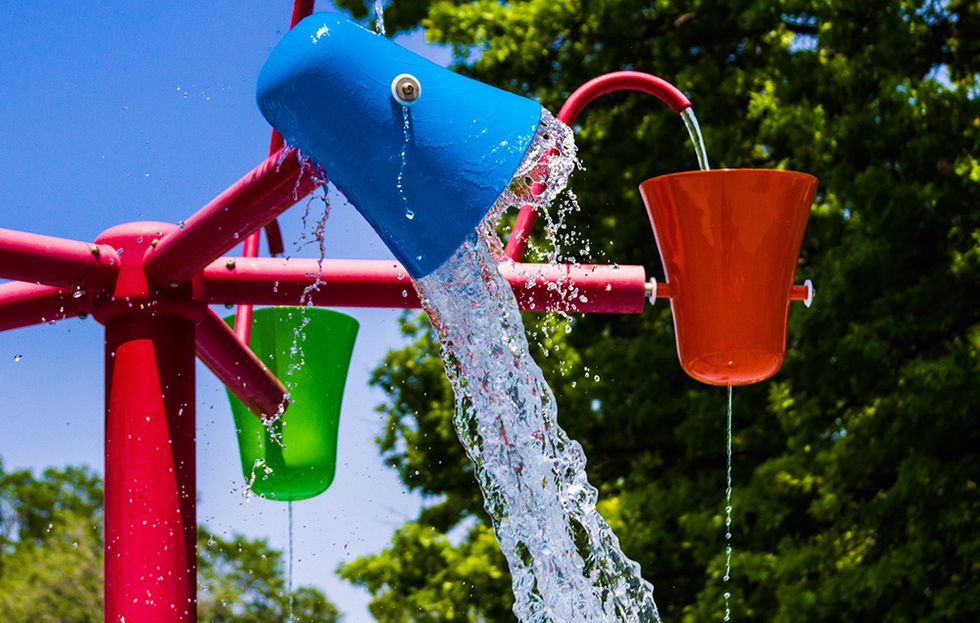
Most bladders hold one to two cups. If yours is on the small side or hypersensitive, you might feel an impulse to evacuate as often as 10 to 15 times per day, Dr. Ingber says. Not exactly convenient for those logging long distances.
In other cases, it’s psychology that pressures you to pee frequently. “Your bladder is a creature of habit,” Garges says, and it has an internal clock as reliable as any GPS watch. Consistently heed nature’s call 10 minutes into your run, and your bladder will keep sounding it, even if it’s not full.
Fortunately, you can retrain your bladder. Here’s how: Empty it, then head out on a short, looped course around a restroom. Go slow, because faster paces make the pressure worse, she says. (That’s one reason races pose a problem.)
Take note of your first urge to go and try to wait five more minutes. Assess how you feel, then try to extend it another five. Within three to seven runs, you should be able to at least double the time you need before stopping, Garges says. Along the way, distract yourself with conversation, singing, or reciting the alphabet forward and backward.
Go to the pros.

If you’ve tried a few fixes and still struggle to turn back the tide, talk to your doctor. He or she may recommend pelvic floor physical therapy. Though it’s intimate and can be uncomfortable at first—involving hands-on treatment—the long-term results can be “life-changing,” Gronski says.
Whether you need to strengthen or relax, these experts can make sure you’re using the right muscles. You’ll progress to strengthening moves over time to build functional strength and endurance. Like your legs, your pelvic floor contains fast-twitch and slow-twitch muscle fibers; you’ll need both long holds and quick, explosive reps to train them both, Garges says. And, you’ll learn to coordinate them with the movements you do every day, including squatting and running.
You’ll likely round out your routine with core, hip, and glute exercises like planks, leg raises, and bridges. “Muscles don’t work in isolation,” Garges says. In fact, many experts have linked pelvic floor weakness to injuries in the hamstring and other parts of the body.
If physical therapy fails to resolve an overactive bladder, your doctor may prescribe a bladder-relaxing medication, Botox injections, nerve stimulation, or even a type of bladder pacemaker called Interstim, Dr. Ingber says. And surgery can help relieve incontinence. Kopke eventually had a procedure called a suburethral sling, where a tiny place of synthetic tape is placed under the urethra for support. The procedure takes 10 minutes and recovery is minimal. She was back to running in a little more than two weeks, with far fewer leaks.
If all else fails, grab a cup.

Though Clor has fine-tuned her strategies since her first race, hot weather during the Boston Marathon in 2016 caused her to drink more (and therefore, leak more). But she didn’t mind as much, because she was also dousing herself with aid station cups to keep cool. “I was soaking wet with water anyway,” she says.
London runner Hans Ho, 34, has a highly orchestrated prerun toilet routine, often involving stretching in the bathroom line. But at the beginning of the 2014 Chicago Marathon, he found himself in the starting corral with a still-full bladder and no further porta-potties in sight. That’s when he spied an empty coffee cup, which he carried around a semi-secluded barrier to relieve himself. “That actually settled my mind a lot—I started running and just felt good,” he says. In fact, he carried an empty cup to the starting line of the Rome Marathon the following year.
The article 8 Practical Ways to Deal With Pee Problems on the Run originally appeared on Runner’s World.
Watch Next

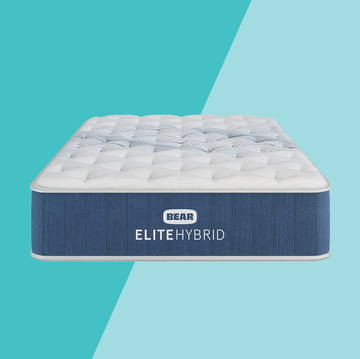
The 10 Best Mattresses for Stomach Sleepers

What Is ‘Ozempic Face’ and What Does It Look Like?

What Is Oil Pulling for Oral Health?

The Science Behind Stringy Chicken








